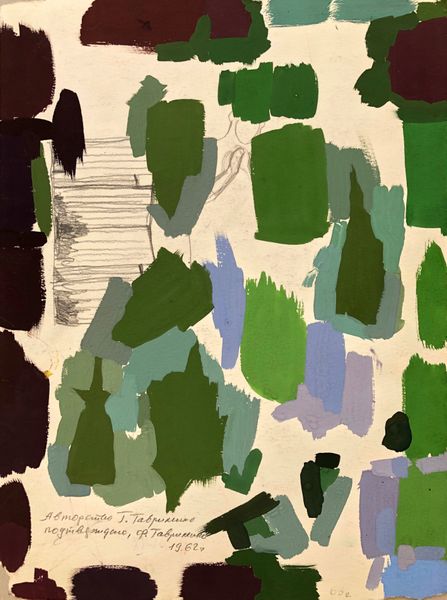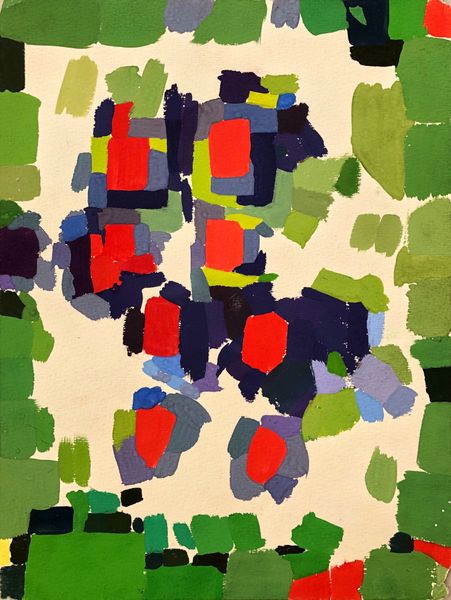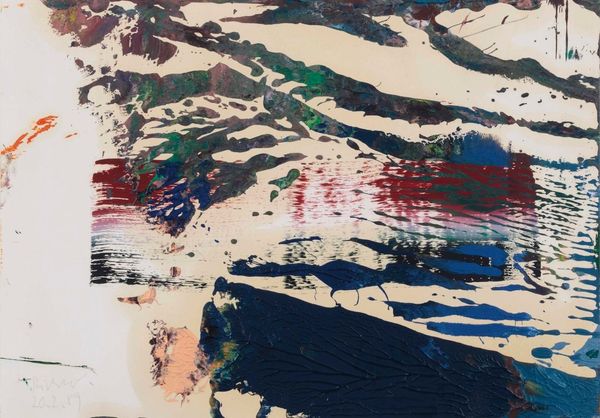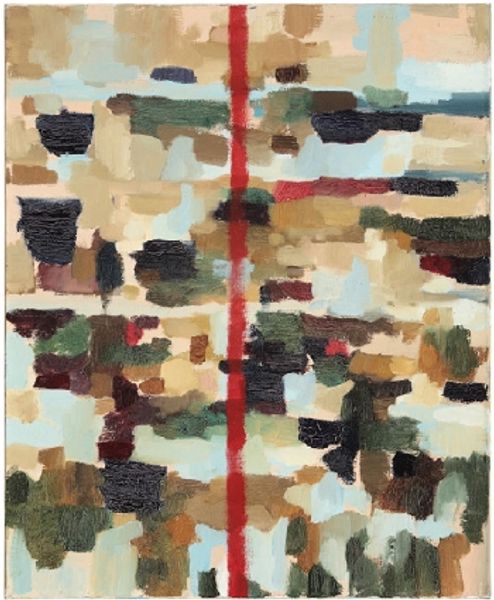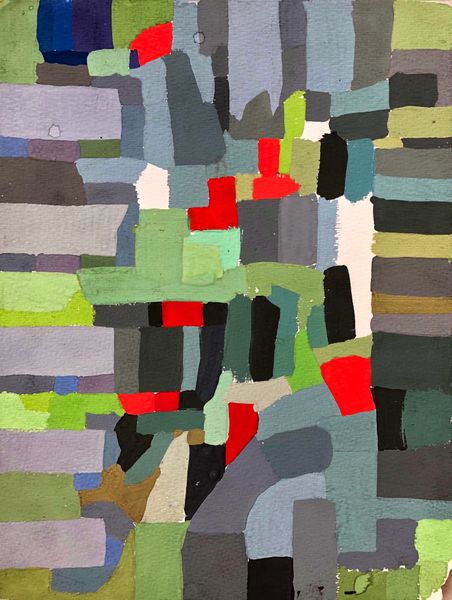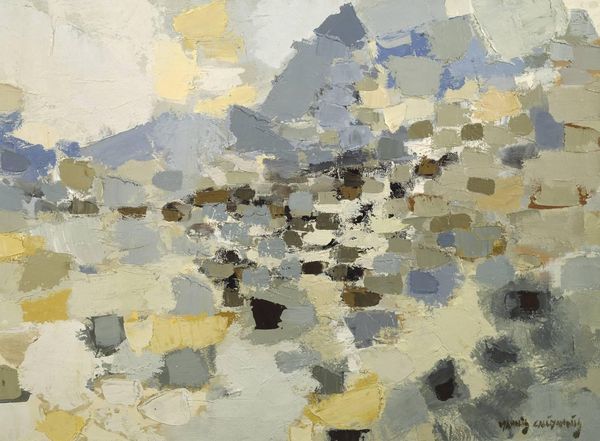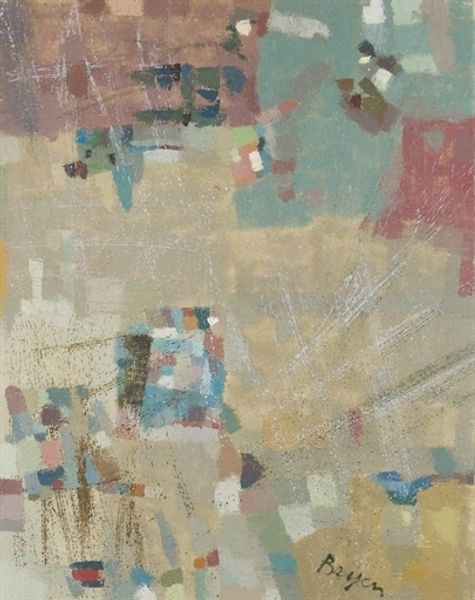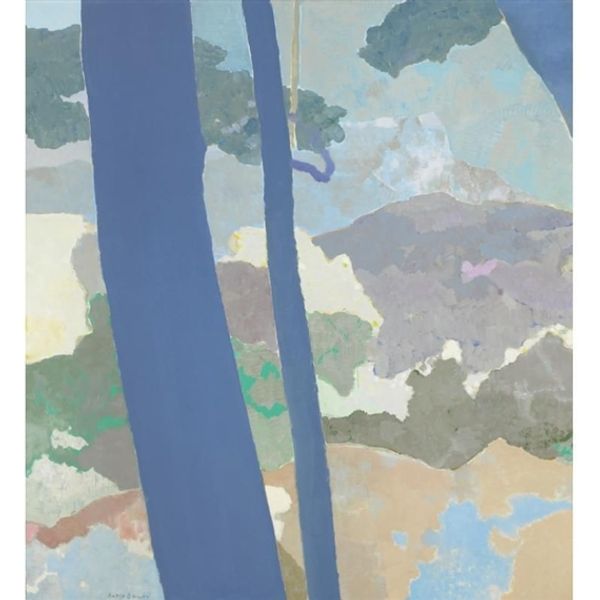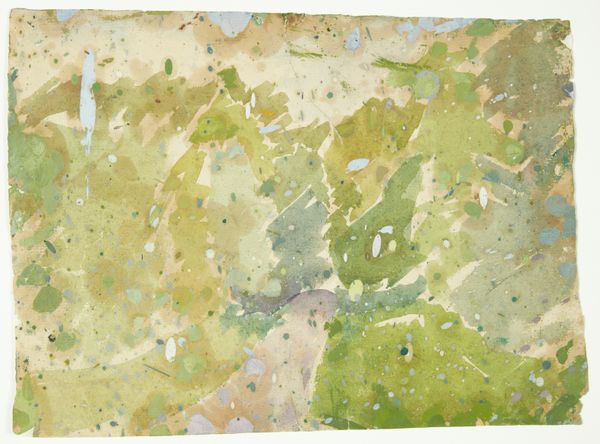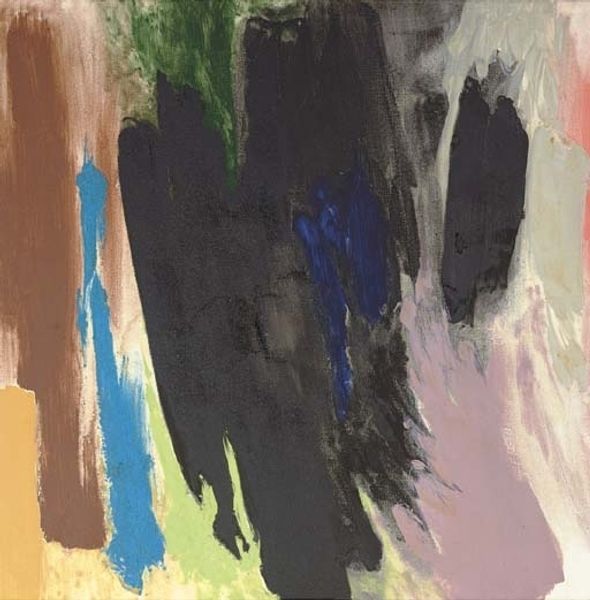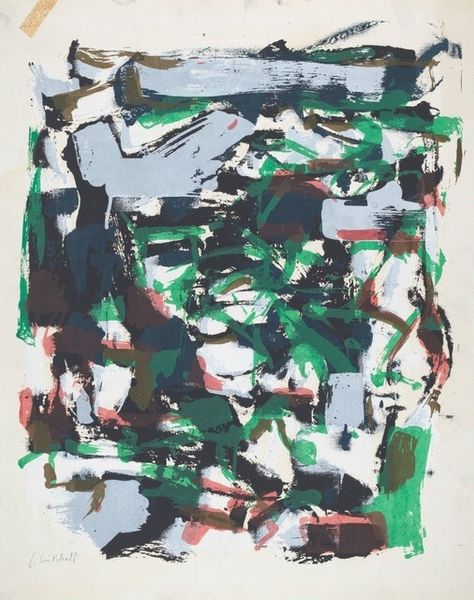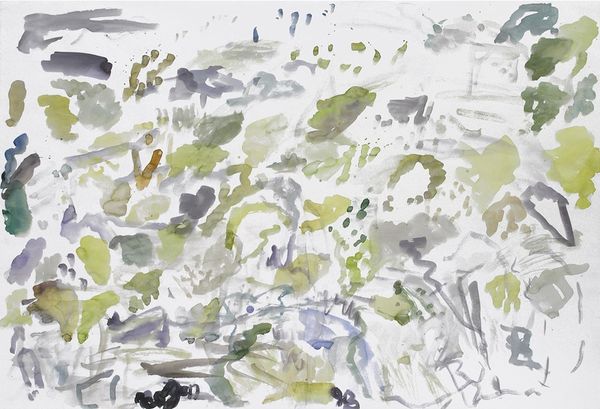
painting, acrylic-paint
#
abstract-expressionism
#
abstract expressionism
#
abstract painting
#
painting
#
acrylic-paint
#
painted
#
form
#
acrylic on canvas
#
geometric-abstraction
#
abstraction
#
modernism
Copyright: Hryhorii Havrylenko,Fair Use
Editor: This is Hryhorii Havrylenko's "Abstraction" from 1963. It looks like acrylic on canvas. The composition is striking with these fragmented shapes of green, brown, and blues dancing across what looks to be an almost bare canvas. What stands out to you? Curator: What's most interesting here is how Havrylenko engages with the very act of painting. Look at how the material—the acrylic itself—is applied. It's not about illusionism or representing a scene. Instead, the focus is on the labor and physicality of applying paint to the canvas. What does the presence of visible brushstrokes tell us? Editor: Perhaps it emphasizes the human element, the hand of the artist? But wouldn't a smoother finish appear more "skilled?" Curator: Exactly! Consider the context of 1963. Abstract Expressionism was questioning traditional notions of artistic skill and high art. By leaving the brushstrokes visible, Havrylenko highlights the process, almost demystifying art creation. We're seeing the traces of labor. It prompts us to question the perceived divide between art and craft. How does the choice of a common medium such as acrylic add to this? Editor: I suppose it moves away from the preciousness associated with older media, aligning the work more with the everyday materials accessible to a broader range of artists. Curator: Precisely! This shift toward accessible materials democratizes the means of artistic production. It suggests a rejection of elitist art-making practices, encouraging a consideration of how art materials themselves contribute to the artwork’s meaning and impact within a specific social landscape. What would be gained if, hypothetically, the artist employed rare pigments? Editor: I see what you mean! That would signal an entirely different message. Focusing on humble materials like acrylic lets the artist consider the processes and modes of making, inviting critical questioning of how such production impacts art and society. Thanks, that perspective gives me a lot to consider about this painting. Curator: Indeed. By recognizing such elements, you highlight that labor, the medium, and material can reveal powerful insights.
Comments
No comments
Be the first to comment and join the conversation on the ultimate creative platform.
